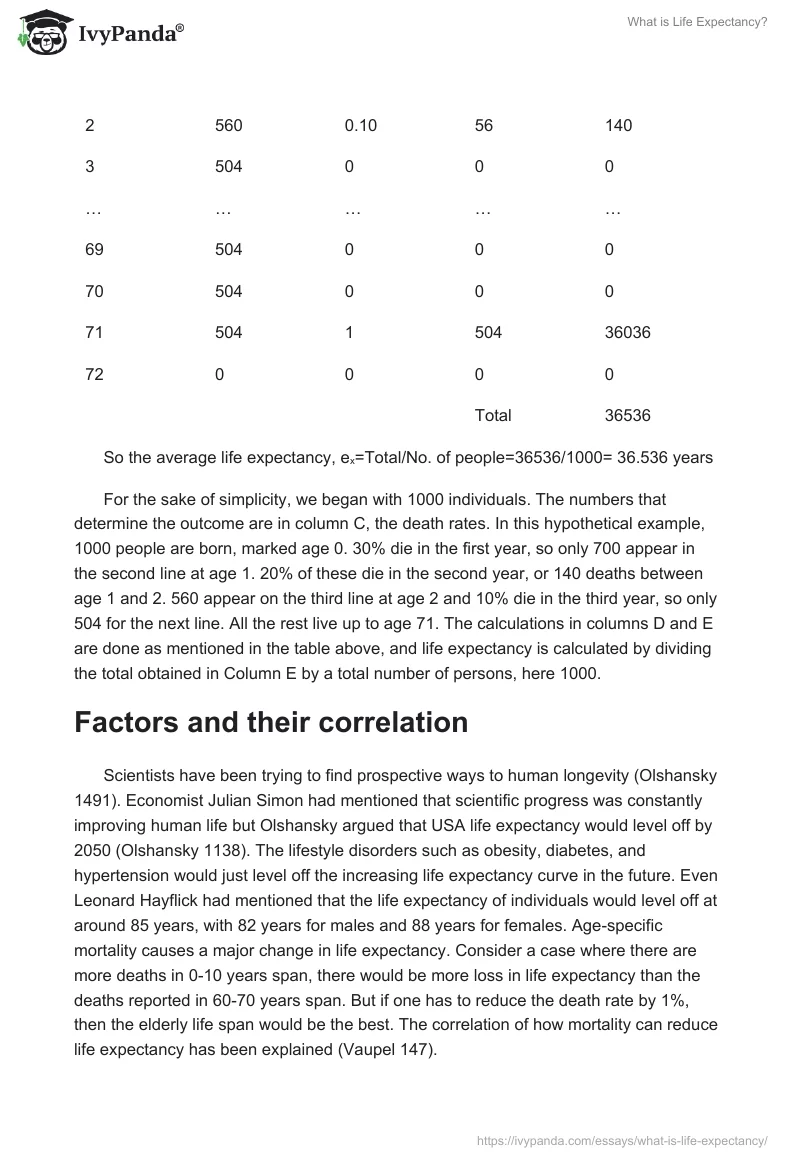Life expectancy may be defined as the possible number of years remaining at a given age. It is denoted by ex, which means the average number of complete years of life remaining. It is calculated from the analysis of life tables. The global blueprint of life expectancy differs with the expansion prowess and socio-economic conditions of various nations. For example, the life expectancy at birth in the USA is 79 years.
The mortality rate during the years of life span determines the life expectancy. There is a high mortality rate during the early years of life as compared to the later years because of lesser immune competence in infants and children. The problem is more applicable in poorer nations. There is the Gompertz-Makeham law of mortality which states that the death rate is the sum of an age-independent component and an age-dependent component.
So accordingly, there is an exponential increase in death rates with age. The factors affecting life expectancy are diet, lifestyle, medical care, stress and injuries, pollution, genetic disorders, obesity, exercise, smoking, drug use, and alcohol abuse. Life span differs from life expectancy in the fact that it represents the maximum years of life that an individual survives, while life expectancy is an average. The goal of this essay is to understand the mathematics of life expectancy and its correlation with factors.
Mathematics of life expectancy
Life expectancies are usually calculated from a life table. A life table shows for each age, the probability that a person of that age will die before the next birthday. Life tables are constructed using projections of future mortality rates. A hypothetical simplified example of life expectancy is given below.
So the average life expectancy, ex=Total/No. of people=36536/1000= 36.536 years
For the sake of simplicity, we began with 1000 individuals. The numbers that determine the outcome are in column C, the death rates. In this hypothetical example, 1000 people are born, marked age 0. 30% die in the first year, so only 700 appear in the second line at age 1. 20% of these die in the second year, or 140 deaths between age 1 and 2. 560 appear on the third line at age 2 and 10% die in the third year, so only 504 for the next line. All the rest live up to age 71. The calculations in columns D and E are done as mentioned in the table above, and life expectancy is calculated by dividing the total obtained in Column E by a total number of persons, here 1000.
Factors and their correlation
Scientists have been trying to find prospective ways to human longevity (Olshansky 1491). Economist Julian Simon had mentioned that scientific progress was constantly improving human life but Olshansky argued that USA life expectancy would level off by 2050 (Olshansky 1138). The lifestyle disorders such as obesity, diabetes, and hypertension would just level off the increasing life expectancy curve in the future.
Even Leonard Hayflick had mentioned that the life expectancy of individuals would level off at around 85 years, with 82 years for males and 88 years for females. Age-specific mortality causes a major change in life expectancy. Consider a case where there are more deaths in 0-10 years span, there would be more loss in life expectancy than the deaths reported in 60-70 years span. But if one has to reduce the death rate by 1%, then the elderly life span would be the best. The correlation of how mortality can reduce life expectancy has been explained (Vaupel 147).
Thus life expectancy can improve due to specific policies adopted at individual and at state levels, and there would be an upper limit to it despite the innovations in public health and medical care. The crux is to lower the mortality rates at all age spans, infants, children, and the elderly alike. The mathematical calculation to points to counter mortality rates to bolster the life expectancy of individuals. For this, a collective approach needs to be adopted in sustained collaboration between the family and the nation.
Works Cited
Olshansky Jay, Carnes Bruce, and Desesquelles Aline. “Prospects for Human Longevity.” Science 291.5508 (2001): 1491-1492. Print.
Olshansky, Jay et al. “A Potential Decline in Life Expectancy in the United States in the 21st Century.” The New England Journal of Medicine 352 (2005): 1138-1145. Print.
Vaupel, J. W. “How Change in Age-specific Mortality Affects Life Expectancy.” Population Studies 40 (1986): 147-157. Print.


